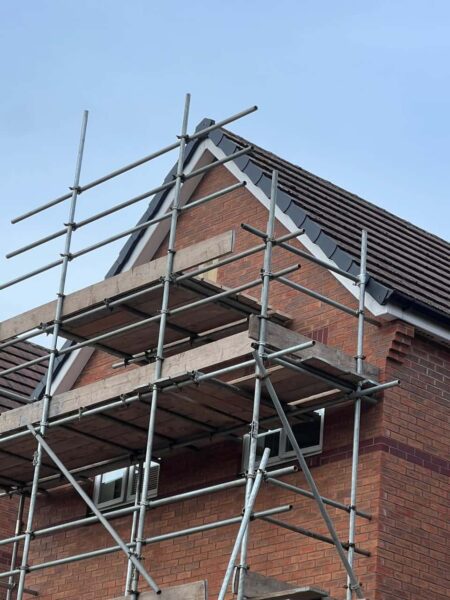Understanding Roof Pitch: Its Impact on Commercial Roof Repair Options
Introduction: The pitch of a roof, often referred to as its slope or angle, plays a significant role in determining its aesthetic appearance, structural integrity, and maintenance requirements. For commercial property owners and managers, understanding the impact of roof pitch on repair options is essential for making informed decisions and ensuring the longevity and performance of their roofing systems. In this guide, we’ll explore the influence of roof pitch on commercial roof repair options and how to navigate repair challenges based on varying roof slopes.
Understanding Roof Pitch:
- Roof pitch is defined as the vertical rise of the roof for every 12 inches of horizontal run, expressed as a ratio. For example, a roof with a 4:12 pitch rises 4 inches vertically for every 12 inches horizontally. Roof pitch can range from flat or low-slope roofs (0:12 to 3:12) to steep-slope roofs (4:12 and above), presenting unique challenges and considerations for repair and maintenance.
Challenges of Low-Slope Roof Repair:
- Low-slope or flat roofs are common in commercial buildings and present specific challenges for repair and maintenance. These roofs are prone to water pooling, leading to leaks, deterioration of roofing materials, and structural damage over time. When repairing low-slope roofs, it’s essential to address drainage issues, reinforce seams and flashing, and ensure proper waterproofing to prevent water infiltration and extend the roof’s life.
Considerations for Steep-Slope Roof Repair:
- Steep-slope roofs, characterised by angles of 4:12 and higher, pose different challenges and repair options compared to low-slope roofs. Steep-slope roofs are more susceptible to wind damage, snow buildup, and shingle displacement, requiring careful attention to roofing materials and installation techniques. When repairing steep-slope roofs, consider options such as asphalt shingles, metal roofing, or tile roofing, depending on factors such as climate, budget, and aesthetic preferences.
Impact on Material Selection:
- The roof’s pitch influences the type of roofing materials suitable for repair or replacement. Low-slope roofs typically require specialised materials such as built-up roofing (BUR), modified bitumen, or single-ply membranes like EPDM or TPO. These are designed to provide superior waterproofing and resistance to ponding water. Steep-slope roofs offer more flexibility in material selection, ranging from traditional asphalt shingles to durable metal roofing or classic clay or concrete tiles.
Safety Considerations:
- Roof pitch also affects safety considerations during repair and maintenance activities. Steep-slope roofs require additional safety precautions, such as harnesses, safety ropes, and appropriate footwear, to prevent falls and accidents. Working on low-slope roofs presents its challenges, including the risk of slips and trips on wet or uneven surfaces. Ensure that roofing contractors adhere to safety protocols and regulations to protect workers and minimise liability risks during repair projects.
Consultation with Roofing Professionals:
- Navigating the complexities of commercial roof repair options based on roof pitch requires expertise and experience. Consultation with qualified roofing professionals is essential for assessing the roof’s condition, identifying repair needs, and recommending appropriate solutions. Roofing contractors can conduct thorough inspections, provide detailed assessments, and propose tailored repair options that address the specific challenges of your commercial roofing system.
Conclusion: Roof pitch significantly impacts commercial roof repair options, from material selection and installation techniques to safety considerations and maintenance requirements. Whether dealing with low-slope or steep-slope roofs, understanding the unique challenges and considerations associated with each roof type is essential for making informed decisions and ensuring your commercial roofing system’s long-term durability and performance. By working with experienced roofing professionals and choosing appropriate repair solutions tailored to your roof pitch, you can protect your investment and maintain a safe, reliable, and resilient roofing system for years.
Call us on: 01480 773 597
Click here to find out more about PER Roofing Godmanchester
Click here to complete our contact form and see how we can help with your roofing needs.

